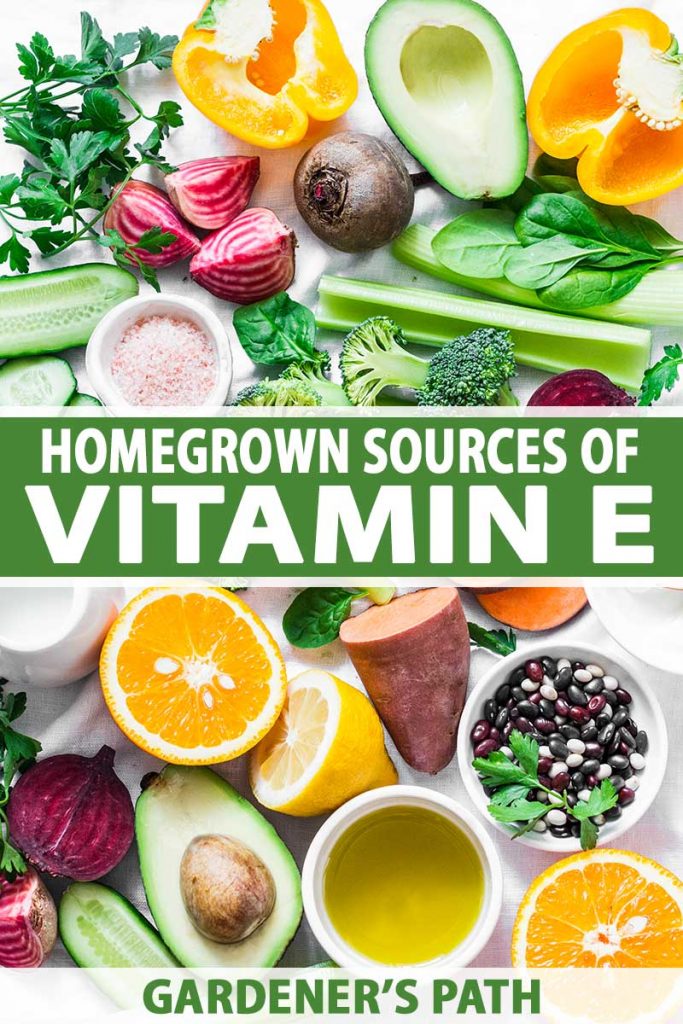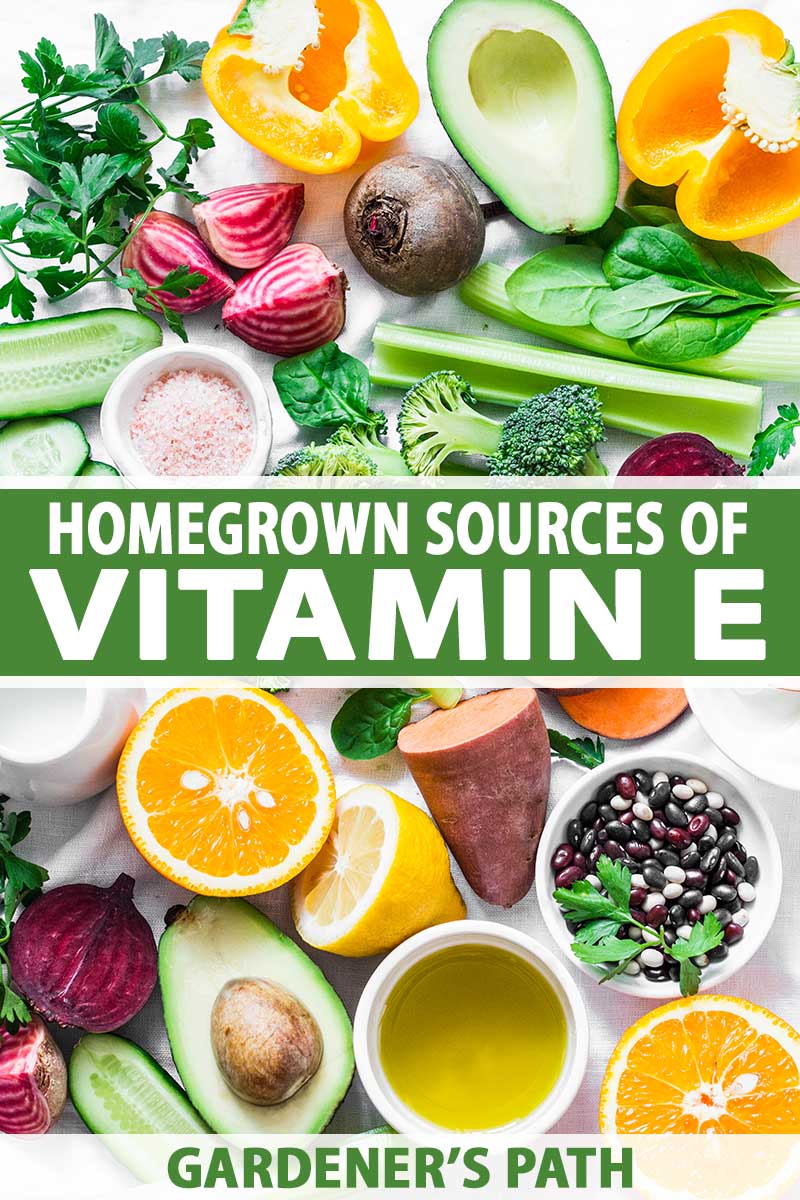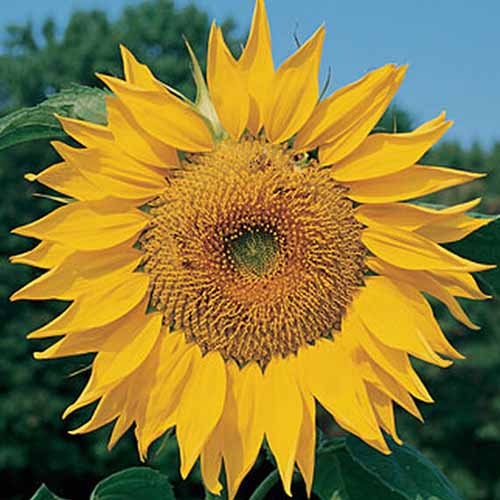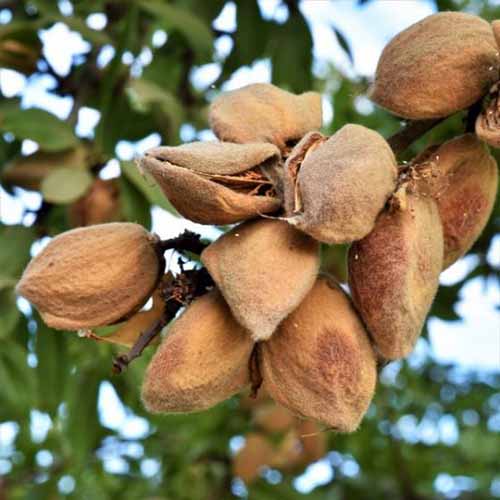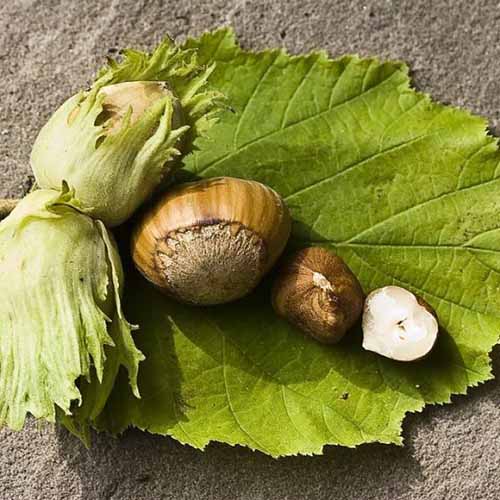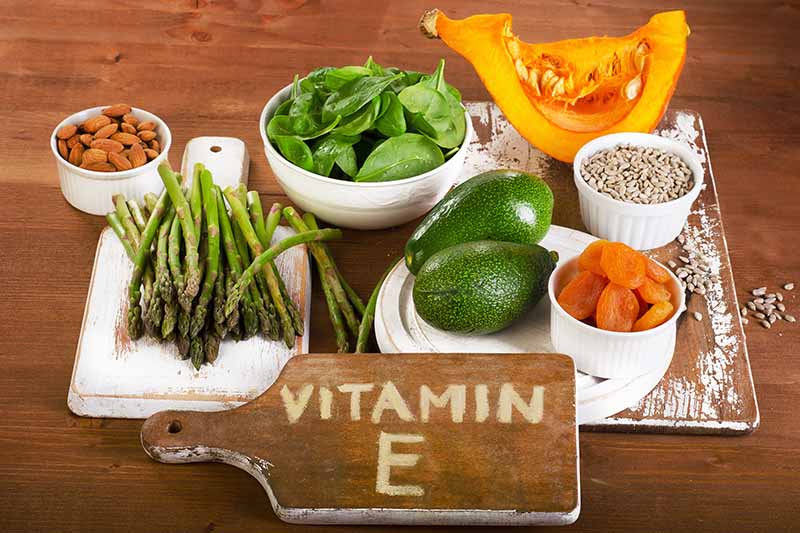Vitamins and minerals are found in all of them. But which ones are the best sources of vitamin E? This essential nutrient serves many functions in our bodies. Luckily, you can easily boost your daily dose by growing plant-based sources in your own backyard, and enjoying the harvest. We link to vendors to help you find relevant products. If you buy from one of our links, we may earn a commission.
What Is Vitamin E?
Vitamin E is one of the fat-soluble vitamins, along with A, D, and K. (C and B-complex vitamins, on the other hand, are water soluble). Our bodies absorb these fat-soluble nutrients best – i.e. they are the most readily bioavailable – when foods that contain them are consumed along with foods that are high in fat. In the case of vitamin E, many of the foods that contain it also contain fat naturally! Fat soluble vitamins can also be stored within our body fat. Though rare among those who get their vitamins from natural sources, it is possible to have too much of a good thing when taking supplements. Talk to your doctor about the appropriate dosage if you choose to take supplements. There are eight different forms of vitamin E that occur naturally, however, not all of them are particularly beneficial to us in terms of bioavailability. Alpha-tocopherol is the type best utilized in our bodies, or the most biologically “active” form, while the other forms don’t bind well to proteins in the liver and are partially excreted. The recommended daily allowance for adults over 19 years of age is 15 milligrams.
How It Functions in the Body
In the body, this vitamin E functions as an antioxidant. What does this mean? While free radicals in the body can potentially cause cellular damage or even lead to cancer, antioxidants like vitamin E can help to protect cells against those free radicals. This nutrient is also involved in immune function, and adequate intake can help us to fight infection. The immune system encompasses several parts of the body including our skin, blood, bone marrow, lymphatic systems, and guts. Additionally, this vitamin is involved in the process of blood vessel dilation, and it inhibits agitation of platelets in the blood. These anticoagulant actions can help to prevent blood clots.
Potential Health Benefits
This nutrient has shown a lot of potential for helping to prevent several types of chronic disease. The need for more research is apparent as few direct causations have been proven thus far. But what we do know is promising! While studies to date do not suggest that supplementation with vitamin E protects against coronary heart disease, when consumed as part of a healthy diet, consumption of foods that are rich in antioxidants is recommended by the American Heart Association. Similar to other types of antioxidants, there is speculation that this vitamin may reduce the risk of certain types of cancer. One epidemiological study that surveyed a large cohort of US adults, with findings published in 2002, indicated that long-term supplementation can reduce the risk of bladder cancer. But a random controlled study of a large cohort published in 2011 found supplementation actually increased the risk of prostate cancer significantly in healthy men. While the benefits of supplementation may be up for debate, getting adequate amounts of this antioxidant from foods can help to prevent cognitive decline as we age. It may also help to slow age-related degeneration of our eyes, but it is important to note that most studies so far in this area tested vitamin E in combination with other nutrients like beta-carotene, zinc, and copper. The overall takeaway from these studies is that getting your recommended daily amount, preferably from natural food sources, is beneficial and may help to prevent certain types of decline that come with age. To conclude that supplementing with vitamin E helps to reduce the risk of a particular type of disease is a bit of a reach currently. This is an area where more research is required to fully understand all of the potential benefits.
Top Garden Sources
So, we know that getting your daily dose from your diet is likely the best option, but what foods are good sources?
Vitamin E is found mainly in seeds, oils, and nuts, but also in some vegetables. You can get more vitamins and minerals at once from nutrient-dense whole foods, and these naturally derived nutrients are generally better absorbed in the body than their synthetic counterparts. Here are my top sources that you can grow at home, from highest to lowest vitamin E content per serving.
1. Sunflower Seeds
The seeds from this sunny flower make for a tasty snack when roasted. They also pack in nearly 50 percent of the daily value of vitamin E! One ounce of seeds provides 7.4 milligrams.
‘Mammoth Russian’ Sunflower ‘Mammoth Russian’ sunflowers flowers yield large heads with many seeds, perfect for getting in your daily dose. Seeds are available at Burpee. Learn how to grow your own sunflowers here.
2. Tree Nuts
Besides seeds, tree nuts can also be good sources – notably almonds and hazelnuts. Per one-ounce serving, almonds provide 6.8 milligrams of vitamin E or 45 percent of the daily value, and hazelnuts offer 4.3 milligrams or 29 percent of the daily value.
‘All-in-One’ Almond The ‘All-in-One’ almond tree is perfect for backyard orchards, as this variety doesn’t grow to be quite as large as some other types. You can buy a plant for yourself at Nature Hills Nursery. Learn how to grow almonds in this guide. If you prefer hazelnuts, check out our growing guide to get started.
Hazelnut Three to four-foot bare root plants or potted hazelnut saplings in #3 containers are also available via Nature Hills Nursery.
3. Avocados
Any excuse to eat more guacamole is okay in my book! One medium avocado provides 2.6 milligrams, 17 percent of the daily value.
‘Hass’ Avocado The creamy green deliciousness in this case grows on trees, typically in warmer climates, though there are some cold hardy varieties available. Learn more about growing your own and then purchase your own ‘Hass’ avocado tree, available from Nature Hills Nursery.
4. Peanuts
If you’re a peanut butter fiend like me, you are probably happy to see peanuts on this list! One ounce of the nuts contains 2.2 milligrams of vitamin E, or 15 percent of your daily value. Remember that anything over 10 percent is considered a good source.
Peanuts To get your peanuts fresh rather than from a jar, try growing your own! Peanuts require the warm climate of Zones 8-12 to produce edible nuts, but if you live in a cooler region, they can also do well indoors in pots. Seeds are available from Eden Brothers.
5. Spinach
Of course, we would be remiss to make it through this article without mentioning some classic garden-fresh veggies. Spinach is high in many vitamins and minerals, E included. One-half cup of boiled spinach provides 1.9 milligrams, or 13 percent of the daily value. Sauteing your spinach instead will preserve a small amount of the vitamin E that is lost in the cooking liquid, and a half cup serving prepared this way offers 2.1 milligrams. Keep in mind that spinach wilts and shrinks significantly when you cook it, and the measurements above represent volume after cooking. If you’re a fan of big spinach salads, one cup of raw spinach provides 0.5 milligrams.
‘Baby’s Leaf’ Spinach The ‘Baby’s Leaf’ hybrid cultivar is useful because of its smaller leaves that are quick to mature, and easy to clean and eat. You can get started with these seeds, available from Burpee. Learn how to grow spinach at home in our guide.
6. Broccoli
A classic cruciferous favorite, broccoli is another top option. A boiled half-cup offers 1.2 milligrams, or about 8 percent of the daily value. Sauteed broccoli provides a similar amount, whereas raw broccoli offers only 0.7 milligrams per cup.
‘Calabrese’ Broccoli If you don’t already, the challenge of growing your own at home can be so rewarding. The ‘Calabrese’ variety is the type that is typically sold in supermarkets, and seeds are available from Eden Brothers.
Homegrown Nutrition
Harvesting your own nuts, seeds, and vegetables can make any gardener feel truly accomplished.
When preparing foods at home with the goal of maximizing your vitamin E intake, try to pair veggies with a source of fat to increase fat-soluble vitamin absorption. Nuts, seeds, and avocados naturally contain fats, while cooking your spinach or broccoli in some olive oil will boost bioavailability. With the antioxidant power and potential health benefits of vitamin E on the table, choosing to grow some of these deliciously healthy top sources in your own garden is an excellent choice! Interested in more nutritious plant-based foods you can grow at home? Read these articles next:
Get Your Daily Dose of B Vitamins with These Homegrown Vegetables The Best Homegrown Vegetables High in Vitamin A What Vegetables are High in Iron?
© Ask the Experts, LLC. ALL RIGHTS RESERVED. See our TOS for more details. Product photos via Burpee, Eden Brothers, and Nature Hills Nursery. Uncredited photos: Shutterstock. With additional writing and editing by Allison Sidhu. The contents of this article have been reviewed and verified by a registered dietitian for informational purposes only. This article should not be construed as personalized or professional medical advice. Gardener’s Path and Ask the Experts, LLC assume no liability for the use or misuse of the material presented above. Always consult with a medical professional before changing your diet, or using supplements or manufactured or natural medications.
